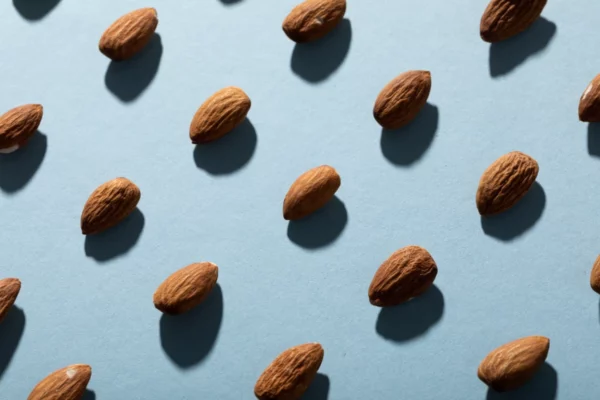Whole grain spelt, an ancient grain with a rich history, is gaining popularity due to its exceptional nutritional value and unique flavor. This versatile grain offers a range of health benefits and can be incorporated into various dishes.
What is Whole Grain Spelt?
Whole grain spelt, scientifically known as Triticum spelta, is an ancient cereal grain that belongs to the wheat family. It has been cultivated for thousands of years and is known for its nutty flavor and distinct nutritional profile. Spelt kernels are larger than common wheat kernels and have a tough outer hull that protects the grain.
Unlike refined grains, whole grain spelt retains its bran, germ, and endosperm, making it a rich source of dietary fiber, protein, vitamins, and minerals. Its high fiber content supports digestive health, regulates blood sugar levels, and promotes satiety. Additionally, it contains important nutrients such as magnesium, zinc, and iron, which contribute to overall well-being.
Health Benefits of Whole Grain Spelt
Including whole grain spelt in your diet can provide a multitude of health benefits. Here are some key advantages:
A half cup (approximately 100grams) serving of cooked whole grain spelt contains 9.3 grams of dietary fiber.
Digestive Health:
The high fiber content in spelt supports a healthy digestive system by promoting regular bowel movements and preventing constipation. It also acts as a prebiotic, fueling the growth of beneficial gut bacteria.
Blood Sugar Regulation:
Spelt’s complex carbohydrates are digested more slowly than refined grains, leading to a gradual release of glucose into the bloodstream. This helps stabilize blood sugar levels and provides sustained energy throughout the day.
Heart Health:
Whole grain spelt is low in fat and cholesterol, making it heart-healthy. Its fiber content helps reduce LDL (bad) cholesterol levels, thereby lowering the risk of cardiovascular diseases.
Nutrient-Rich:
Spelt contains essential nutrients like magnesium, which supports bone health, and iron, which aids in oxygen transport and energy production. It also provides B vitamins, important for metabolism and overall vitality.
Preparation and Cooking Methods :
Whole grain spelt can be prepared in various ways, adding a wholesome touch to your meals. Here are some popular cooking methods:
Boiling:
Boil spelt grains in water or vegetable broth until tender, which typically takes around 45 minutes. Cooked spelt can be used as a base for salads, soups, or as a nutritious side dish.
Baking:
Spelt flour, obtained by grinding whole spelt grains, can be used as a substitute for wheat flour in baking. It adds a nutty flavor and a pleasant texture to bread, muffins, cookies, and pancakes.
Pilaf:
Cook spelt grains in a flavorful broth with vegetables, herbs, and spices to create a delicious pilaf. It serves as a wholesome and satisfying main course.
Sprouting:
Sprouting spelt grains enhances their nutritional profile and digestibility. Sprouted spelt can be used in salads, stir-fries, or enjoyed as a nutritious snack.
Popular Spelt Recipes:
To inspire your culinary adventures with whole grain spelt, here are three delightful recipes that showcase its versatility:
Whole grain spelt is a versatile ingredient that can be used in a variety of delicious recipes. Here are some popular and nutritious recipes that incorporate this wholesome grain:
1. Spelt Risotto: Create a comforting and nutritious dish by substituting Arborio rice with whole grain spelt in a classic risotto recipe. Sauté onions, garlic, and vegetables of your choice, then add spelt and gradually stir in vegetable broth until cooked to perfection. Finish with grated Parmesan cheese and fresh herbs for a flavorful twist.
2. Spelt Salad: Make a hearty and filling salad by combining cooked spelt with a medley of fresh vegetables, such as cucumbers, cherry tomatoes, bell peppers, and feta cheese. Drizzle with a tangy vinaigrette dressing and garnish with herbs like parsley or basil for a refreshing and nutritious meal.
3. Spelt Pilaf: Prepare a flavorful pilaf by sautéing onions, garlic, and spices in olive oil, then adding spelt and toasting it for a few minutes. Pour in vegetable or chicken broth and simmer until the liquid is absorbed and the spelt is tender. Add dried fruits, toasted nuts, and herbs for added texture and flavor.
4. Spelt Bread: Use whole grain spelt flour to bake a homemade loaf of bread. Combine spelt flour, yeast, water, and a pinch of salt. Knead the dough, let it rise, and bake until golden brown. Enjoy slices of this nutty and wholesome bread with your favorite spreads or use it for sandwiches.
5. Spelt Breakfast Bowl: Start your day with a nutritious and filling breakfast bowl. Cook spelt in milk or water until tender, then top it with fresh fruits, such as berries, sliced bananas, and a drizzle of honey. Sprinkle with nuts or seeds for added crunch and protein.
6. Spelt Pasta: Make your own homemade spelt pasta by combining spelt flour, eggs, and a pinch of salt. Roll out the dough, cut it into desired shapes, and cook until al dente. Toss with your favorite sauce and garnish with grated cheese and fresh herbs for a wholesome and satisfying meal.
These recipes showcase the versatility and health benefits of whole grain spelt. Incorporating spelt into your meals adds a nutty flavor, chewy texture, and a wealth of nutrients to your diet. Whether you’re looking for savory dishes or sweet treats, spelt can be a nutritious and delicious addition to your culinary repertoire.
Summary:
Whole grain spelt is a great way to add diversity to your whole grains and to add another source of dietary fiber to your diet.









